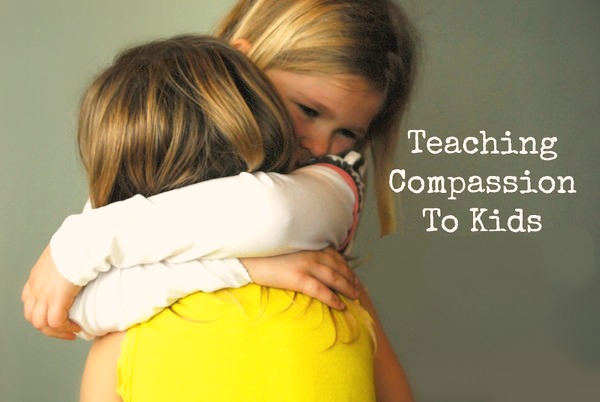Why is compassion important? Compassion is the ability to understand the emotional state of another person or oneself. The term is often confused with empathy, however compassion has the added element of having a desire to alleviate or reduce the suffering of another.
Why practice compassion? Scientists have shown that when we feel compassion, our heart rate slows down, we secrete the “bonding hormone” oxytocin, and regions of the brain linked to empathy, caregiving, and feelings of pleasure light up, which often results in our wanting to approach and care for other people. When we are compassionate to people we are activating pleasure circuits in the brain, it makes us feel good! By tuning in to other people in a kind and loving manner we also reduce our own risk of heart disease. It also makes you more resilient to stress and strengthens the immune response. As cheesy it may sound, it also just makes the world a better place to live in!
Therefore, starting to fully understand compassion while we’re young is vital as we become adults. Signe Whitson, a school counselor specializing in adolescent mental health, writes an article explaining how to teach compassion to young people.
1. Walk the Talk
Children may listen to your words, but more importantly, they learn from observing your actions. When you have a chance to practice a random act of compassion, do so! When you are frustrated in an interpersonal interaction, express your displeasure in words that show respect for the dignity of the person you are addressing. When you encounter a person who needs help, stop what you are doing and tend to them, even (read: especially!) if it is not particularly convenient to do so. Remember: opportunities to show compassion do not occur by appointment. Show young people that anytime is the right time to engage in acts of service and compassion for others.
2. Put the Child on the Receiving End of Compassion
While showing compassion to others is a top way to teach this value to a child, allowing a young person to experience compassion first-hand is even more impactful. When your child is hurt or sick, be sure to provide abundant TLCC (tender, loving, compassionate care.) It may sound obvious, but tending to a child when he is feeling down or under the weather is the best way to teach him how to show compassion to others.
3. Talk the Talk
Most children can learn about true compassion by seeing and feeling this trait acted out, but when parents talk explicitly about acts of compassion, they communicate its importance as a prized family value. As you watch television or movies with your child, be sure to point out instances where compassion was shown — or should have been shown! Talk about people who particularly need compassion, such as the elderly and children living in poverty.
4. Volunteer Your Time
When children become actively involved in acts of showing compassion to others, they learn about this value in a very deep and enduring way. Find age-appropriate ways to introduce your child to volunteering, such as visiting a nursing home and sharing a craft activity with a resident, serving a meal at a homeless shelter, helping to organize a canned food drive, collecting coats to donate to needy children, or even participating in a charity walk for a specific cause. These activities are at once meaningful and fun, which makes them especially effective in getting kids to routinely think compassionately about the needs of others.
5. Care for a Pet
Bringing a pet into a family is certainly not a step to be taken lightly or impulsively, but it is worth giving serious consideration to providing your young person with the experience of caring for an animal, as a way to foster compassion. Children who care for pets learn important values such as responsibility, unconditional love, empathy, and compassion for all living things.
6. Read All About It
Children's books are great for providing a window into the experiences of others. As a School Counselor, my go-to children’s writer is Trudy Ludwig, the award-winning author of such books as My Secret Bully (my all-time favorite pick for sparking conversations with kids about bullying and relational aggression) and The Invisible Boy, a great read for inspiring empathy and compassion for young people who find themselves on the periphery of school social hierarchies. For older kids, check out biographies of famous figureheads of compassion, such as the Dalai Lama or Mother Theresa.
7. 'Compassion It'
In recent years, rubber wristbands have become a ubiquitous symbol of causes and concerns. While most of the messages are positive and inspiring, I must admit that their sheer common-ness resulted in me stopping reading the various messages on friends’ wrists. Until recently. I noticed a two-tone band that a relative was turning over and felt compelled to ask about it. It was a Compassion It band, she explained. Every morning, she puts the band on her wrist with its black side facing outward, as a personal reminder to act compassionately toward someone else. When such an act is committed each day, she turns the bracelet to its white side.
8. Make a Wish
Acts of life-changing compassion can be only a click away. Use the internet to introduce your child to different charitable organizations that provide compassionate assistance to others. The Make-a-Wish Foundation provides hope, strength, and joy to children with life-threatening medical conditions. While for younger kids, the site may be too heart-wrenching or scary, older kids can have a truly impactful experience of being able to provide tangible help and joy to a peer. The experience can be life-changing for both giver and receiver.
Article written by: Signe Whitson, LSW is an author, school counselor, and national presenter on topics related to child and adolescent mental health. For more information, please visit www.signewhitson.com.













